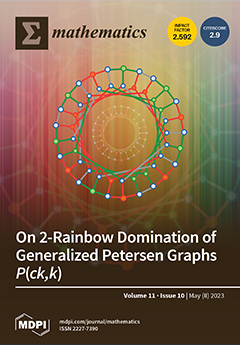In this work, a color image encryption and decryption algorithm for digital images is presented. It is based on the modular discrete derivative (MDD), a novel technique to encrypt images and efficiently hide visual information. In addition, Langton’s ant, which is a two-dimensional
[...] Read more.
In this work, a color image encryption and decryption algorithm for digital images is presented. It is based on the modular discrete derivative (MDD), a novel technique to encrypt images and efficiently hide visual information. In addition, Langton’s ant, which is a two-dimensional universal Turing machine with a high key space, is used. Moreover, a deterministic noise technique that adds security to the MDD is utilized. The proposed hybrid scheme exploits the advantages of MDD and Langton’s ant, generating a very secure and reliable encryption algorithm. In this proposal, if the key is known, the original image is recovered without loss. The method has demonstrated high performance through various tests, including statistical analysis (histograms and correlation distributions), entropy, texture analysis, encryption quality, key space assessment, key sensitivity analysis, and robustness to differential attack. The proposed method highlights obtaining chi-square values between
and
, entropy values between
and
, PSNR values (in the original and encrypted images) between
and
, the number of pixel change rate (NPCR) values between
and
, unified average changing intensity (UACI) values between
and
, and a vast range of possible keys
. On the other hand, an analysis of the sensitivity of the key shows that slight changes to the key do not generate any additional information to decrypt the image. In addition, the proposed method shows a competitive performance against recent works found in the literature.
Full article





